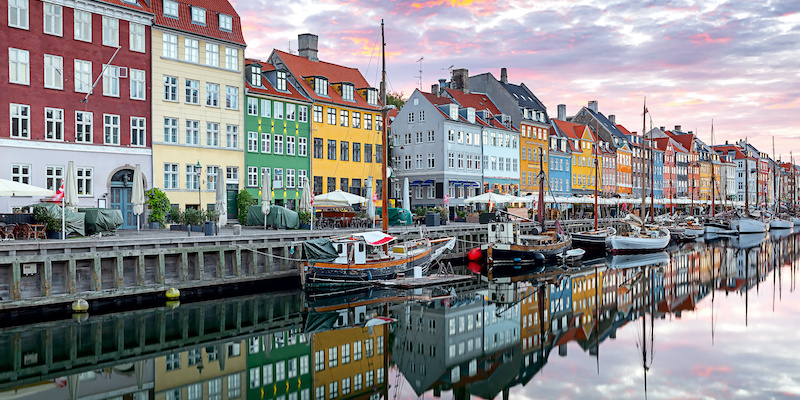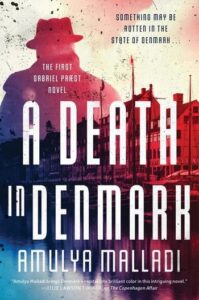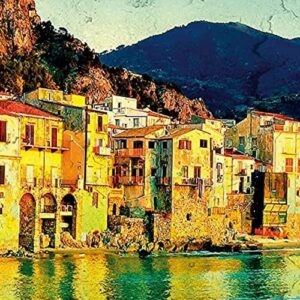In March 2020, the world stopped and I, who had just returned from a trip to Munich and Amsterdam, started to realize that the Rijksmuseum would be one of the last I would see in a long time, and the Michelin-starred restaurant Vermeer would be one of the last I had eaten in.
I had several trips planned in the following months and one of them was to Copenhagen, my favorite city in the world. I lived in Denmark for fourteen years and moved to southern California in 2016. I went to Copenhagen regularly after I moved and now all of a sudden, I couldn’t. I missed the city. I missed the cafés, the blues bars, the jazz clubs, the restaurants and just walking through Strøget, the pedestrian street in the center of the city.
This was also the time when my job as a marketing executive for a medical device company became even more stressful as we all did what we could do to combat the pandemic. Working from home all day every day and seeing no one except through Microsoft Teams meant that I needed a break from reading clinical studies about COVID-19.
Many years ago, I started to plan a book about a private investigator who lived in the city by the lakes in these old townhouses called Kartoffelrækkerne, or potato townhouses. The area is known as the potato rows as it was built on former potato fields and follows very straight rows of construction. We lived in one such house, not by the lakes but by Svanemøllen Station. In fact, a former Danish Prime Minister, Helle Thorning-Schmidt lived there. I have always loved these houses that were built in the 1870s and 1880s by the Workers’ Building Association to provide cheap and hygienic accommodation for workers. Now, however, they are some of the most expensive homes in the city.
I knew the PI was single. He had a grown daughter. Played the guitar…jazz? Blues? He shaved his head. He dressed very well. Was emotionally stable with no deep-rooted problems like alcoholism and drug addiction due to childhood sexual abuse or abuse…you know, the things we see so many cops/detectives have in Nordic Noir books.
I also knew that the story would be about racism, specifically against Muslims (and all brown people) in Denmark with the murder of a right-wing politician. I knew a lot about the story, but I’d never written a mystery before, so I had no idea how to know the story (also called plotting in the trade) before I wrote it. Usually, my process is to find a beginning and then see where the characters take me. In a mystery, I may very well end up painting myself in a corner, wondering if the butler indeed did it.
I struggled to plot, something I find difficult because I can’t tell the story until I meet all the characters. If I don’t know who they are, I don’t know how they’ll behave.
But then one day, a scene flashed in my head. A man playing his guitar at one of my favorite blues bars in Copenhagen, Mojo, the place you went in Copenhagen if you were into blues. It wasn’t fancy or chic, in fact, a hole in the wall. And it was atmospheric, inexpensive, and had delivered live blues (or jazz or folk music) every day since the mid-eighties. It was not pretentious, and the only thing you had to worry about was arriving early enough not to get stuck at a table behind a pillar, with a partial view of the stage.
There were almost always musicians milling outside the bar with a beer in one hand and a cigarette in the other, awaiting their turn onstage.
I began to write A Death in Denmark and took my protagonist, Gabriel Præst, to all the cool places in Copenhagen that I was missing. The plotting happened as I wrote the book—so there were more pages that got deleted than ended up being part of the final book.
I took Gabriel to breakfast at Mirabelle, a gorgeous café in Nørrebro and right next to one of my favorite Michelin-starred restaurants Kiin Kiin. My husband and I loved Kiin Kiin and in fact, it makes an appearance in another book of mine, The Copenhagen Affair, which has been optioned for development as a series by Warner Brother, with Lily Collins and Mindy Kaling attached to produce.
When we lived in Copenhagen, my husband and I had figured out the best wine bars to go to. In the summer, when the sun was up until late in the evening, we went to Terroiristen because you could sit outside and drink wine while soaking up the sun. So, off Gabriel went to Jægersborggade, an old, cobbled Copenhagen street ensconced between colorful buildings, with several great restaurants, bars, and shops. On that street, in addition to Terroiristen, we also enjoyed the beer house and restaurant Manfreds, and the fabulous Michelin-starred restaurant Relæ. Gabriel has dinner at Manfreds (which is not there anymore) with his friends early on in A Death in Denmark.
One of my favorite bakery chains in Copenhagen is Emmerys, which is an institution in Copenhagen. In my book The Copenhagen Affair, I start the “action” in an Emmerys on Strandvejen. But that would be too far for Gabriel, so he frequents the one close to his townhouse on Øster Farimagsgade. Emmerys makes the best chocolate kanelsnegle (cinnamon rolls) which Gabriel enjoys as much as I used to.
I have always had an affection for orange wine, even before it became popular with the “natural wine” craze. And the only restaurant in Copenhagen where I could find it was Pastis. It’s a no-nonsense French restaurant that has electric car parking right in front of it. Then we had an electric car, a Renault, an old model that had a range of 100 kilometers; but going to Pastis meant that we could always get a very good glass of wine and guaranteed parking in the city. (Now, everyone has an electric car so it’s probably not as easy to find parking.)
In the summer, the restaurant opens up so that the inside and outside become one. The walls of Pastis are adorned with photographs of post-coital naked men and women (I mean, they’re French after all, what else can you expect). Gabriel’s office is right above Pastis, and he goes to the restaurant a lot—to eat, to meet with people, and to work. They also make a kick-ass Kir royale, which Gabriel likes to order.
I do have a weakness for French food and the best homestyle French cooking can be found at L’Education National in the middle of Copenhagen. When you order beef bourguignon, they serve it straight in a Le Creuset pot as you would at home. They make an excellent quiche Lorraine, and their coquilles St. Jacques is perfection. Gabriel meets someone there for lunch and orders one of their fluffy omelets.
My husband and I are jazz fans and we used to go to the old Custom House (now The Standard) to listen to jazz and the Niels Lan Doky International Jazz Collective (alas, not there anymore). Gabriel, who plays the guitar (both blues and jazz) also plays at these great houses of jazz.
A wonderful wine bar in Copenhagen where you can get unusual wines is, remarkably named not your USUAL wine bar. I found some excellent Moldavian wine there and I didn’t even know wine was made in Moldova. So, Gabriel meets the ex who got away there and exercises his palate by ordering wine that isn’t from the old world.
We get great Italian pizza in California, but nothing beats Madbaren Marmorkirken, a hole-in-the-wall that serves some of the best Italian pizza in Copenhagen. Gabriel’s current friend with benefits, Nico brought pizza (and a chianti) from Madbaren Marmorkirken when she visits him for a booty call. Yet another time he has dinner with Nico at another French favorite of mine, Restaurant l’Alsace on Ny Østergade.
I took Gabriel to museums and art shows; I took him walking and bicycling through the streets of Copenhagen and made him run around the Copenhagen lakes. I visited almost all of my Copenhagen with Gabriel—and even took him to Berlin.
One of the pleasures of living in Copenhagen was the ability to drive around Europe. As a family, we drove all over Germany, France, Italy, Switzerland, and even parts of Spain. So, off Gabriel went in his friend Clara’s Porsche (I never drove a Porsche on the autobahn) and drove from Copenhagen to Berlin. The ferry ride from Denmark to Germany isn’t much to write home about, but I missed even that and was happy to revisit it with Gabriel.
I loved writing A Death in Denmark because it taught me so much about Denmark’s World War II history. Since we were all in lockdown, my husband and teenage sons were home. I talked to them about the book and the characters—in fact, everyone in the book became a regular topic of discussion during dinner, the one time we all got together every day after our day at work and school in our rooms.
I’d tell them what Gabriel was up to on the days I wrote, and where he was. We’d discuss the Denmark’s World War II history that my husband and I learnt together as we researched Danish Nazi collaborators. My family not only helped me plot the book, but they read it, gave me constructive feedback, and made it better. But what I loved the most about telling this story was traveling to Copenhagen during the pandemic with Gabriel. And after I got vaccinated, the first thing I did was buy a ticket to Copenhagen and finished editing the book at all the places that I took Gabriel to.
***


















